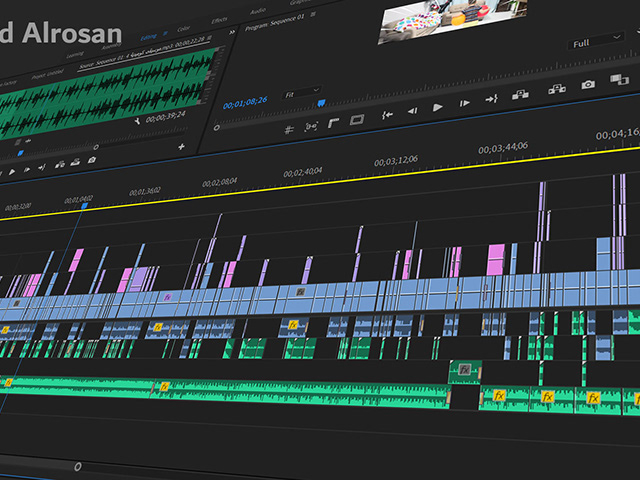How-to Guide: Setting Up a Successful Google Ads Campaign from Scratch
Google Ads is a powerful tool for driving targeted traffic to your website, increasing brand visibility, and generating leads. However, creating a successful Google Ads campaign requires careful planning and execution. In this guide, we’ll walk you through the essential steps to set up a Google Ads campaign from scratch, ensuring you maximize your return on investment.
Introduction
Google Ads (formerly known as Google AdWords) allows businesses to place ads on Google’s search engine results pages and across the Google Display Network. With its pay-per-click (PPC) model, Google Ads offers a way to reach potential customers who are actively searching for products or services similar to yours. Setting up a successful campaign involves more than just creating ads—it requires strategic planning, ongoing optimization, and an understanding of the platform’s features.
Step 1: Research Keywords
Finding the Right Keywords
Effective keyword research is the foundation of a successful Google Ads campaign. Here’s how to find and select the best keywords for your campaign:
- Use Google Keyword Planner: This free tool within Google Ads helps you discover keyword ideas and see their search volume and competition levels. Start by entering terms related to your business to get a list of potential keywords.
- Consider Search Intent: Think about the intent behind the keywords. Are users looking to make a purchase, seeking information, or comparing options? Choose keywords that align with your business goals and target audience.
- Analyze Competitors: Review the keywords your competitors are targeting. Tools like SEMrush and Ahrefs can provide insights into their keyword strategies.
- Long-Tail Keywords: Focus on long-tail keywords—more specific phrases that often have lower competition and higher conversion rates. For example, instead of targeting “shoes,” you might target “men’s waterproof hiking boots.”
Step 2: Creating Ads
Writing Compelling Ad Copy
Once you have your keywords, it’s time to create ads that capture attention and drive clicks. Follow these tips to write effective ad copy:
- Craft a Strong Headline: Your headline should be engaging and include your primary keyword. It’s the first thing users will see, so make it compelling. For example, “Buy Eco-Friendly Hiking Gear – Free Shipping!”
- Highlight Unique Selling Points: What sets your product or service apart? Include key benefits or offers in your ad copy, such as discounts, free shipping, or quality guarantees.
- Include a Clear Call-to-Action (CTA): Encourage users to take action with a clear and direct CTA. Phrases like “Shop Now,” “Get a Quote,” or “Learn More” guide users on what to do next.
- Match Ad Copy to Landing Pages: Ensure that your ad copy aligns with the content on your landing page. Consistency between the ad and landing page helps improve quality scores and conversion rates.
Step 3: Setting Up Campaigns
Navigating the Google Ads Platform
With your keywords and ad copy ready, you can set up your campaign on the Google Ads platform:
- Create a Google Ads Account: If you don’t already have one, sign up for a Google Ads account at ads.google.com. Follow the prompts to set up your account and billing information.
- Choose Your Campaign Type: Select the type of campaign that aligns with your goals—Search Network, Display Network, Shopping, Video, or App campaigns. For beginners, a Search Network campaign is a good starting point.
- Set Your Budget and Bids: Determine your daily budget and bidding strategy. You can choose between manual CPC (cost-per-click) or automated bidding strategies. Start with a budget you’re comfortable with and adjust as needed based on performance.
- Define Your Target Audience: Set targeting options such as location, language, and demographic targeting to ensure your ads reach the right audience.
- Create Ad Groups: Organize your keywords into ad groups based on common themes or products. Each ad group will contain a set of related keywords and corresponding ad copy.
Step 4: Monitoring and Optimization
Tracking Performance and Improving Results
After your campaign is live, ongoing monitoring and optimization are crucial for success:
- Monitor Key Metrics: Track metrics such as click-through rate (CTR), conversion rate, cost-per-click (CPC), and return on ad spend (ROAS). Use Google Ads’ built-in reporting tools to assess performance.
- A/B Testing: Conduct A/B tests to compare different versions of your ads and landing pages. Test variations in headlines, ad copy, and CTAs to determine what resonates best with your audience.
- Adjust Bids and Budget: Based on performance data, adjust your bids and budget to allocate more resources to high-performing keywords and ads.
- Refine Targeting: Review and refine your audience targeting based on performance insights. Exclude underperforming keywords or audiences to improve campaign efficiency.
- Continuous Improvement: Regularly update your ad copy, keywords, and landing pages to keep your campaign fresh and relevant. Stay informed about industry trends and adapt your strategies accordingly.
Conclusion
Setting up a successful Google Ads campaign requires careful planning, effective keyword research, compelling ad copy, and ongoing optimization. By following these steps, you can create targeted ads that drive qualified traffic to your website and achieve your marketing goals.
Key Points to Remember
- Keyword Research: Choose relevant keywords that align with user intent and business goals.
- Ad Creation: Write engaging ad copy with clear CTAs and ensure alignment with landing pages.
- Campaign Setup: Navigate the Google Ads platform to set budgets, targeting, and ad groups effectively.
- Optimization: Monitor performance, conduct A/B tests, and continuously refine your campaign for better results.
With these tips, you’ll be well on your way to running a successful Google Ads campaign that drives traffic and delivers measurable results.






